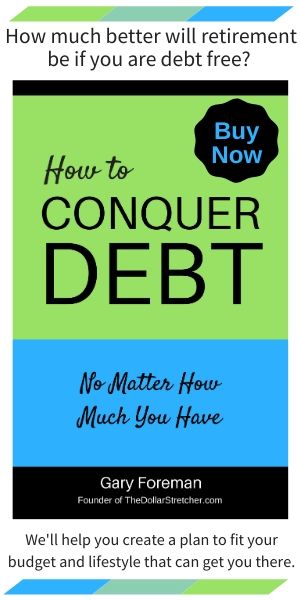Home Mobility Equipment: Where To Buy and How Much To Spend
Home mobility equipment exists to aid daily living. But how do you make sense of it all and know which tools might be best for you or your loved one? Read on for an overview.
by Debra Karplus

Mom’s arthritis is creating joint pain, especially on damp days, making walking difficult. Dad’s chronic obstructive pulmonary disease (COPD) limits his endurance and causes fatigue. Your aging parents may benefit from some mobility devices at home to make everyday tasks easier.
A wide variety of acute and chronic physical and emotional disorders can be labeled as disabilities. But with approximately one in eight people having a disability at some point in their life, mobility equipment such as wheelchairs, walkers, and canes, and devices to assist with activities of daily living (ADL) may be needed at home.
How do you know what home health equipment to buy and where to purchase it?
Where To Find Affordable Home Mobility Devices
It is important to note that equipment that is prescribed by a physician is more likely to be covered by insurance or Medicare than devices that you buy on your own.
Wheelchairs
A transport wheelchair can help your aging parent enjoy outings and activities. These are lightweight, one-size-fits-all folding wheelchairs that can be purchased new at places like Walgreens, Walmart or online at Amazon for about $125. Be sure it folds and fits in your car trunk and that you can manage its weight and size.
For much less money, transport wheelchairs are often available in good condition bought used or even obtained free if the user no longer needs it. Insurance is not likely to cover a transport wheelchair that you buy on your own.
For people with chronic, progressive, or permanent disabilities such as stroke or paraplegia, a licensed professional such as an occupational or physical therapist will evaluate and recommend some of the many special features of a wheelchair, such as removable arm rests or elevating leg rests. Selecting the proper prescription wheelchair or scooter is not unlike buying a car with so many custom features, and some of the fancier ones might cost as much as your Honda Civic!
You deserve a comfortable retirement.
Walkers
Walkers come in two main varieties. Rolling walkers tend to be preferred by people who need them and by therapists, and can be purchased for as little as about $50 to $75. Those with baskets to hold items, a seat, or a device to hold an oxygen tank can cost much more, sometimes as much as about $300. When possible, buy this in a store rather than online and have the person who will use it try different types of walkers for fit and ease of use.
Buying a rolling walker is not unlike buying a pair of shoes; walk around the store for awhile to see if it is the right walker for the user. These, too, are often available used, but you are sacrificing fit and safety so it’s better to buy a rolling walker new.
Canes
For $25 or more, you can buy a straight cane. Quad canes with four short legs cost a bit more, but aid in stability. Some canes have a folding seat that many people like to use; expect to pay about $50 to $60 for one of these.
Tub Chairs and Shower Benches
Tub chairs and shower benches help with safety in the bathroom.
For $50 to $100, you can purchase a chair or bench at any pharmacy or discount store that sells home health items. Most have adjustable legs to control height for taller or shorted people to use.
You can save money by buying one used; be sure the legs are intact and the material on the seat is flawless.
Daily Living Gadgets
Daily living tasks can become much easier by using inexpensive gadgets.
Eating, bathing, dressing, grooming, and hygiene can be made much simpler for people with physical disabilities when they use adaptive equipment specially designed to perform specific activities of daily living.
Like the larger, more expensive wheelchairs, walkers, and canes, if prescribed by a licensed medical professional, insurance is more likely to cover its cost. Most adaptive equipment for ADL costs between $3 and $50.
For eating, there are various eating utensils that make this pleasurable social activity simpler. Wide handled utensils help those with limited grasp. Swivel utensils aid those with coordination problems.
Dressing aids include elastic laces for those who cannot tie, long shoe horns, button hooks, stocking aids and more.
There are many bath aids including a long handled bath sponge and bath mitt with soap holder.
Having a temporary or permanent physical disability does not have to prevent you or a loved one from enjoying life. Affordable devices exist to aid in daily living.
Reviewed August 2024
About the Author
Debra is an occupational therapist, accountant, teacher and freelance writer. She is a writer for Advance for Occupational Therapy Practitioners. She also writes for Grand Magazine, has some items (fiction and non fiction) selling on Amazon (Kindle), has written several travel articles for the Champaign-Urbana News-Gazette and several articles for freelancewriting.com and volunteers as a money mentor for the University of Illinois Cooperative Extension money mentoring program. Learn more about her at DebraKarplus.blogspot.com.
Sign me up for a comfortable retirement!
Popular Articles
- Comparing Retirement Housing Options
- How We Retired With Almost No Savings
- How Retirees Can Live on a Tight Budget
- 9 Things You Need to Do Before You Retire
- What You Need to Know About Long Term Care Insurance Before You Retire
- You Didn’t Save Enough for Retirement and You’re 55+
- Could Debt Derail Your Retirement? A Checklist
- Your Emergency Fund In Retirement: A Comprehensive Guide
- Managing Your 401k In Your 50s

